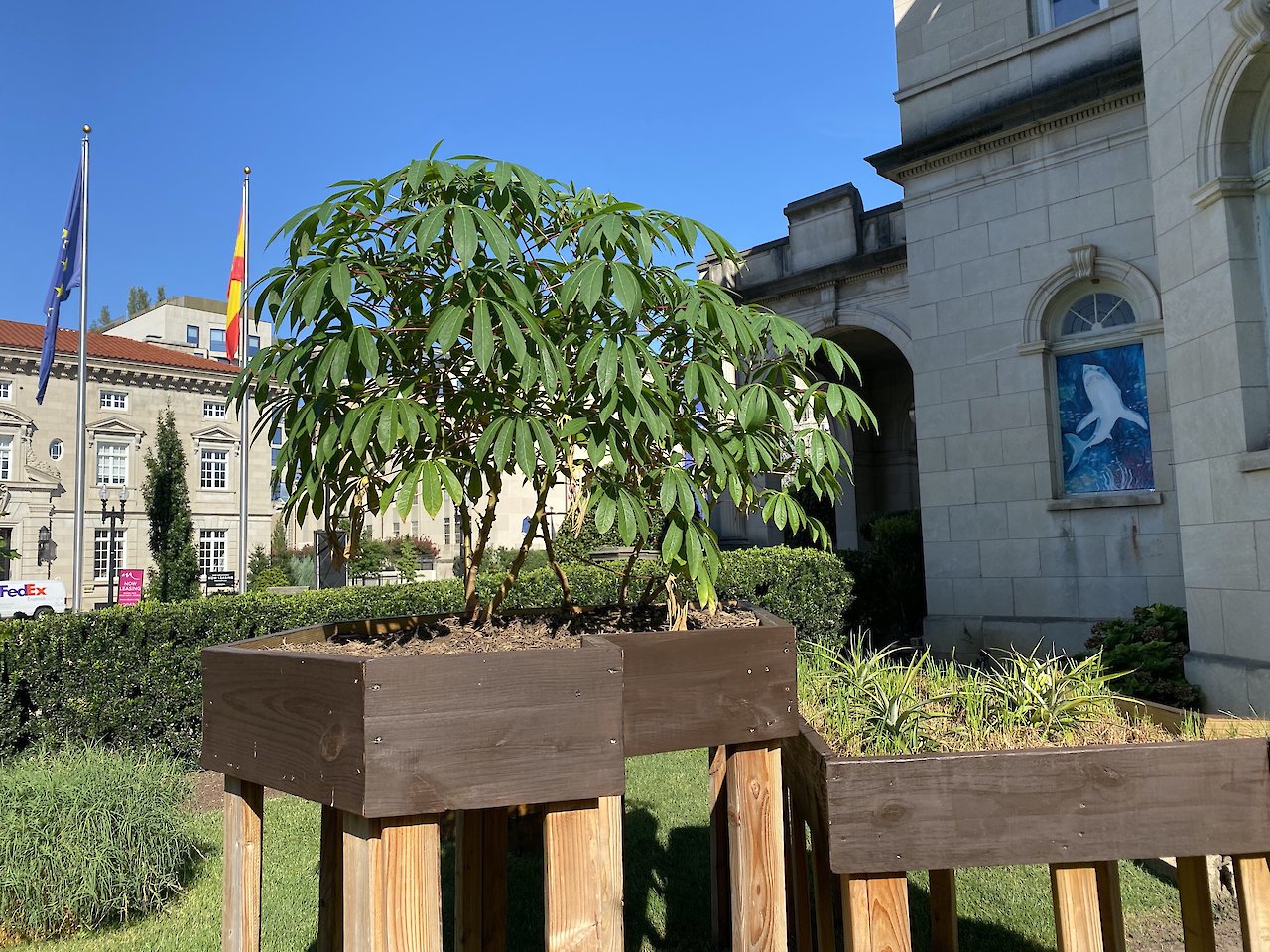Rio de Janeiro (Brazil)
Stop 3A
Ecological capital
Legend
The height of the beds is connected with the natural resources produced and used by each of the countries today. The elevation of the beds represents the natural resources value, being the tallest the one with more Ecological Capital. This graphic contrast the percentage of global natural resources the country uses vs the percentage of global natural resources they have.
Demographics
- Native and others (52%)
- Western descent (48%)
Legend
The color of the beds is connected with the ethnographic diversity of the places they represent today. The colors ranging from natural wood to black reveal the demographic reality divided in this graphic between people from Western descent vs Native & others.
Cassava / Mandioca
Manihot esculenta
The origin of domesticated cassava probably happened 10,000 years ago in west-central Brazil, but its first evidence of cultivation appears in El Salvador 1,400 years ago. Cassava rapidly became a staple food of the native populations of northern South America, southern Mesoamerica, and the Taino people in the Caribbean islands, who grew it using a high-yielding form of shifting agriculture by the time of European contact in 1492. Cassava was a staple food of pre-Columbian peoples in the Americas and is often portrayed in indigenous art.
As a consequence of the first circumnavigation, cassava was introduced to Asia by Portuguese and Spanish traders, planted in their colonies in Goa, Malacca, Eastern Indonesia, Timor and the Philippines. It was also introduced to Africa by Portuguese traders from Brazil around the same period.
Today cassava is an important staple food both in South East Asia and Africa, replacing native crops in places such like Tanzania and parts of eastern Indonesia. Sometimes described as the “bread of the tropics.” Thailand, Cambodia or Vietnam have developed also starch extraction from cassava and bio-fuel production.
Today Nigeria is the highest producer of cassava worldwide followed by Thailand. Worldwide, 800 million people depend on cassava as their primary food staple. No continent depends as much on root and tuber crops in feeding its population as does Africa. In Ghana, for example, cassava and yams occupy an important position in the agricultural economy and contribute about 46 percent of the agricultural gross domestic product. Cassava accounts for a daily caloric intake of 30 percent in Ghana and is grown by nearly every farming family.

